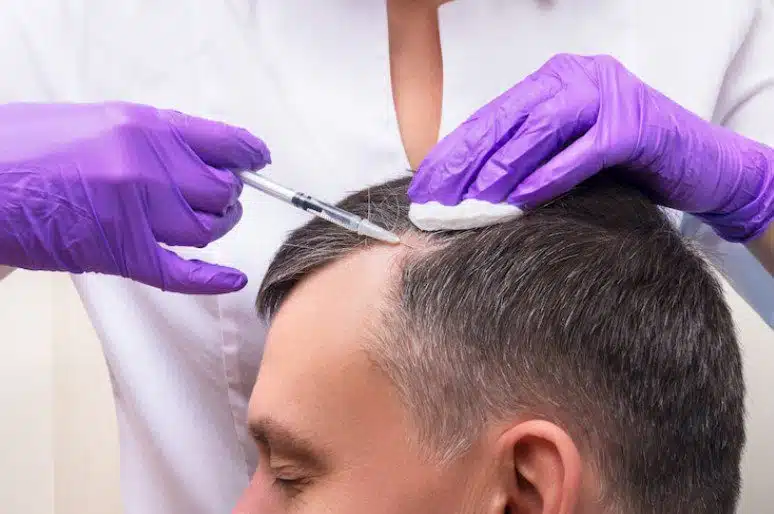Hair loss affects individuals of all ethnic backgrounds, and seeking a hair transplant as a solution is a common choice. However, it is essential to recognize that different ethnicities have unique hair characteristics, including hair texture, density, and growth patterns. As a result, hair transplant techniques need to be tailored to suit the specific needs of each ethnicity. In this article, we will explore the importance of considering ethnicity in hair transplant procedures and how tailored solutions can provide the best results for individuals from diverse backgrounds.
Understanding Ethnic Hair Characteristics:
Before delving into the specifics of hair transplants for different ethnicities, it’s crucial to understand some common characteristics associated with various ethnic backgrounds:
- Asian Hair: Asian hair typically tends to be straight, coarse, and has a round cross-sectional shape. It often has a higher hair density compared to other ethnicities.
- African-Caribbean Hair: African-Caribbean hair is known for its unique curly or kinky texture, which can vary in tightness and coarseness. This type of hair tends to have a lower density but offers excellent coverage due to its voluminous nature.
- Caucasian Hair: Caucasian hair varies greatly in texture, ranging from straight to wavy or curly. It tends to have a moderate density and a wide range of colours and thicknesses.
Tailored Solutions for Ethnic Hair Transplants:
- Harvesting Techniques: The harvesting techniques in hair transplants should be adjusted to the characteristics of ethnic hair. For individuals with Asian hair, FUE (Follicular Unit Extraction) is a suitable option, as it allows for the precise extraction of individual hair follicles. The straight and thick nature of Asian hair makes it easier to extract grafts successfully. For individuals with African-Caribbean or tightly curled hair, FUE can also be utilized, but specialized tools and techniques may be necessary to avoid damage to the fragile hair follicles.
- Hairline Design: Creating a natural-looking hairline is a crucial aspect of any hair transplant, regardless of ethnicity. However, the hairline design should consider the specific features and aesthetic goals of each ethnicity. For instance, individuals of Asian descent often have a lower hairline and a straighter, flatter shape compared to other ethnicities. The hairline design should take into account these characteristics to achieve a harmonious and authentic appearance.
- Graft Placement: The placement of hair grafts is essential to achieve a natural result that complements the individual’s ethnic features. This involves considering the direction of hair growth, density, and the specific needs of each ethnicity. For example, in African-Caribbean hair transplants, careful consideration should be given to the curly nature of the hair. Placing grafts at the correct angle and in the appropriate distribution is crucial to achieve a natural-looking outcome.
- Donor Hair Management: In ethnic hair transplants, donor hair management is a critical aspect of the procedure. Donor hair is typically harvested from the back and sides of the scalp, which may have different characteristics than the recipient area. The surgeon must carefully select donor hair that closely matches the recipient area’s texture, thickness, and curl pattern. This ensures a seamless blend and a harmonious overall appearance.
- Post-Transplant Care: Post-transplant care is equally important for individuals of all ethnicities. However, specific considerations may be necessary to address the unique needs of different hair types. For example, individuals with tightly curled hair may require specific instructions on how to care for their new transplanted hair without disrupting the curl pattern. Providing tailored post-operative care guidelines ensures optimal healing and long-term success for ethnic hair transplant patients.
- Experience and Expertise: Choosing a skilled hair transplant surgeon with experience in performing procedures on individuals of diverse ethnic backgrounds is crucial. An experienced surgeon will have the knowledge and expertise to customize the procedure according to the specific needs of each ethnicity. They will understand the nuances of different hair types and employ techniques that yield the best possible results for each patient.
By considering ethnicity in hair transplant procedures and tailoring the techniques accordingly, individuals from diverse backgrounds can achieve natural-looking and satisfactory results. A personalized approach ensures that the unique characteristics of each ethnicity are taken into account, leading to a successful outcome that aligns with the individual’s goals and enhances their overall appearance.
In conclusion, hair transplant procedures should be tailored to suit the unique characteristics of different ethnicities. Considering factors such as hair texture, density, and growth patterns allows for a customized approach that delivers the best possible hair transplant results. By choosing a skilled surgeon experienced in ethnic hair transplants and following personalized techniques, individuals from diverse backgrounds can regain their hair and confidence with natural-looking and long-lasting outcomes.





